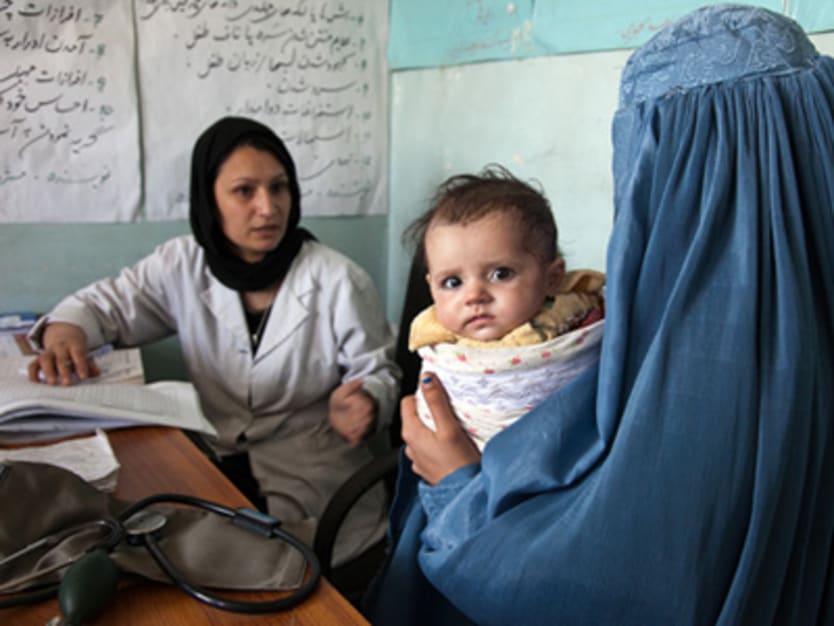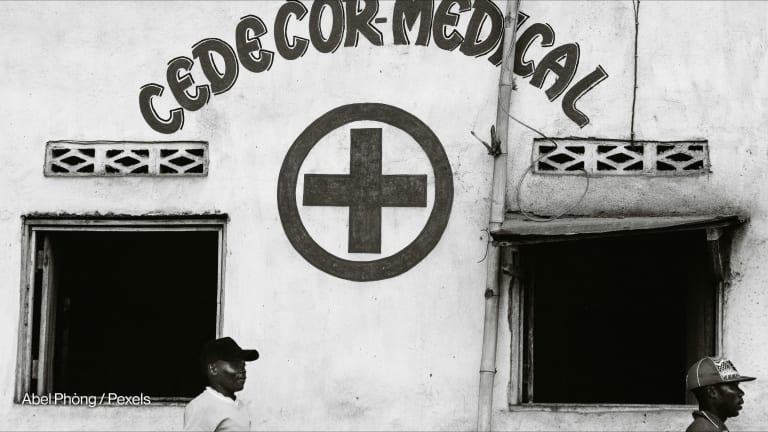
The Afghan health system was in shambles after the Taliban government was chased from power in December 2001. Immunization rates had fallen below 20 percent and nine out of ten women were on their own for labor and delivery. Suhaila Seddiqi, newly appointed as public health minister, could have begun her tenure with highly visible and politically popular moves like building hospitals in the major cities. She didn’t. Instead, she led the development of a basic package of essential primary care services and coordinated its delivery to Afghans throughout the country, including remote rural areas. It worked. By 2010, twice as many Afghans had access to family planning, maternal deaths were down by two thirds, and reductions in child mortality had saved 150,000 lives.
The missing post-2015 health target
Seddiqi didn’t call her plan universal health coverage, but her vision carried all of UHC’s essential components: It worked to provide everyone affordable access to the healthcare services they needed most. Building on successes in Mexico, Thailand, Ghana, and other low- and middle-income countries, UHC has recently gained momentum as an international target. The United Nations and the World Health Organization have endorsed it in the strongest terms. In the words of World Bank President Jim Yong Kim, “We must be the generation that delivers universal health coverage.”
With this level of enthusiasm among major players, it’s no surprise that UHC has figured prominently in deliberations for the Sustainable Development Goals, which will succeed the Millennium Development Goals after 2015. UHC added further momentum in April when the report of the Global Thematic Consultation on Health recommended UHC as “a desirable goal in its own right” within the overarching goal of maximizing healthy life expectancy.
Most recently, the May 30 report of the High-Level Panel on the Post-2015 Development Agenda endorsed the goal of ensuring healthy lives and set out five specific health targets. These targets build directly on the current health MDGs, focusing on infant and child health, immunization, maternal mortality, sexual and reproductive health rights, and communicable diseases such as AIDS. Consistent with its aim of being “bold and transformative,” the HLP targets go farther by aspiring to end preventable child deaths, taking a lifespan approach to immunization (which could target cervical cancer, pandemic influenza and adult pneumonia), and tackling high burden chronic diseases such as heart disease, cancer and diabetes.
The HLP targets for ensuring healthy lives are inspiring and most welcome. Yet one key target is missing. Sustainable, large scale progress on this ambitious health agenda is only achievable in the context of universal health coverage. Why? Well-designed and effectively implemented UHC is the one approach that transforms health systems to mobilize all available resources and equitably deliver the prevention, care, and treatment that people need.
Better health through UHC
As the HLP report recognizes, universal access to basic healthcare services is the key to achieving most of the post-2015 health outcome targets. For example, basic care prevents 80 percent of maternal deaths. But despite the clear need for these services, 13 years after the adoption of the MDGs, many developing country health systems are still not organized to deliver them widely.
Leaders must commit to do better. A target for progress toward UHC — measured in low-income countries by the coverage of basic primary care services — would establish clear expectations and accountability for governments. By integrating services under a primary care model, countries will leverage synergies across health areas (such as combining screening and prevention for multiple conditions in the same clinic visit), providing better care for every dollar spent. They’ll make the most of trained health workers, infrastructure, and commodities such as essential medicines. Although restructuring health systems requires commitment, it’s one of the best investments that countries can make.
Transforming health systems for equitable and sustainable health impact
Two of the HLP’s five “big, transformative shifts” are to “leave no one behind” and organize around sustainable development. UHC is an ideal target for achieving both. UHC inherently promotes equity through the goal of health for all. It’s most life-changing for those underserved by the status quo — those for whom the necessary services are unavailable or unaffordable. In Rwanda, for example, efforts towards UHC began by first identifying the poorest residents using community-based mechanisms and providing them comprehensive subsidized care. UHC is motivated by the understanding that health is a human right.
UHC is essential to sustainable development because it mobilizes all viable sources of funding, both international and domestic, within a coordinated framework. International assistance remains an essential resource for the poorest countries, particularly to accelerate new programs such as expanded immunization, AIDS treatment, and new approaches to malaria control. Success depends also on harnessing domestic funding for health. UHC can save lives by channeling the rapid economic growth that’s already occurring in sub-Saharan Africa and elsewhere into essential health services and innovations in service delivery.
The road ahead
If U.N. Secretary General Ban Ki-moon wants sustainability, equity, and real transformation in global health, he should recommend UHC as a post-2015 health target when he reports to member states in September. Driven by strong leaders like Seddiqi, UHC is measurable and achievable, as demonstrated by the nearly 20 low and middle-income countries that have achieved or are well on the way to UHC. The longer countries wait to embrace UHC, the more entrenched, siloed, and inequitable their health systems will become and the less effectively they will mobilize the full range of financial resources for health. Through UHC, we can do better.
Join the Devex community and access more in-depth analysis, breaking news and business advice — and a host of other services — on international development, humanitarian aid and global health.








